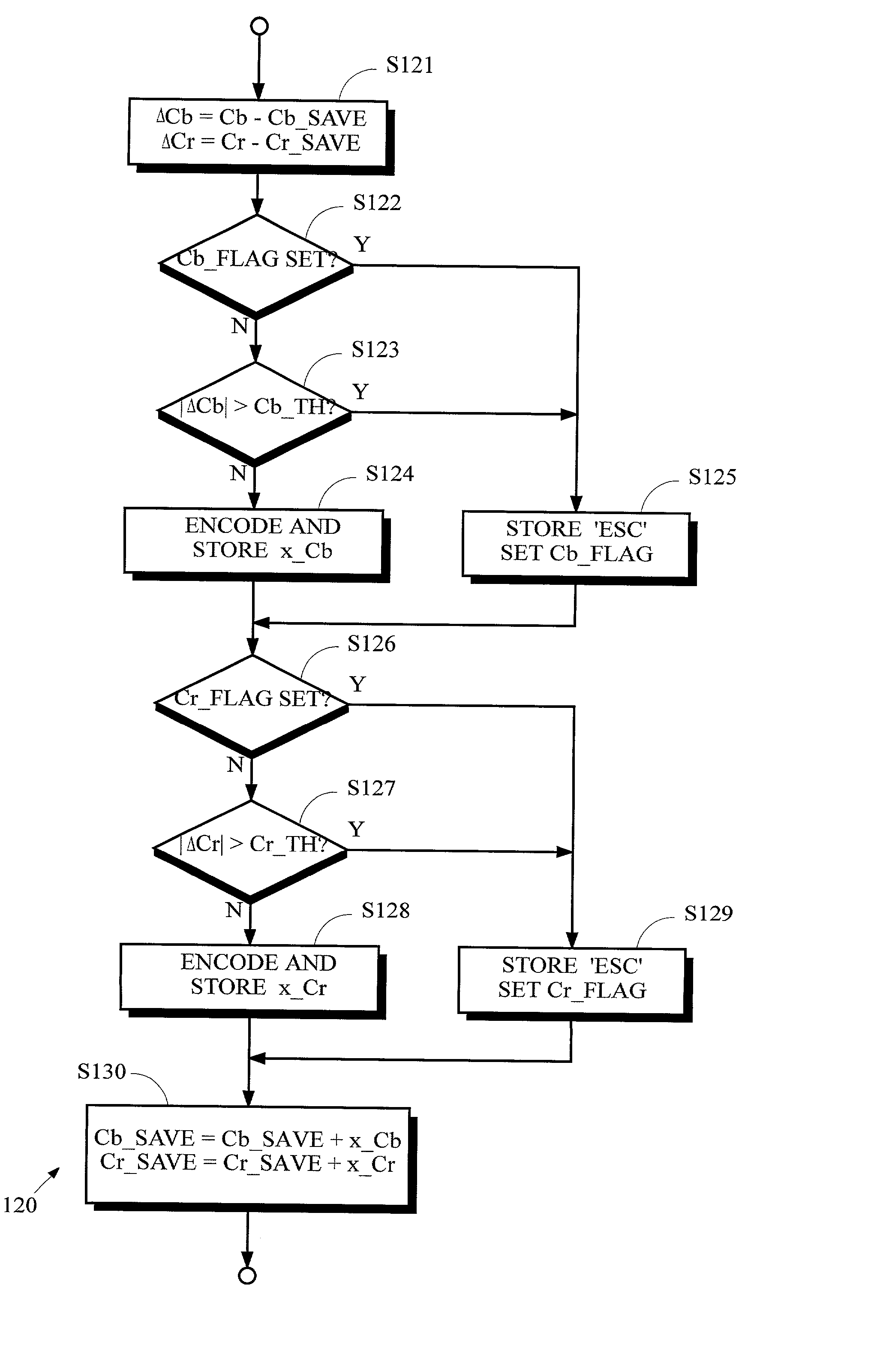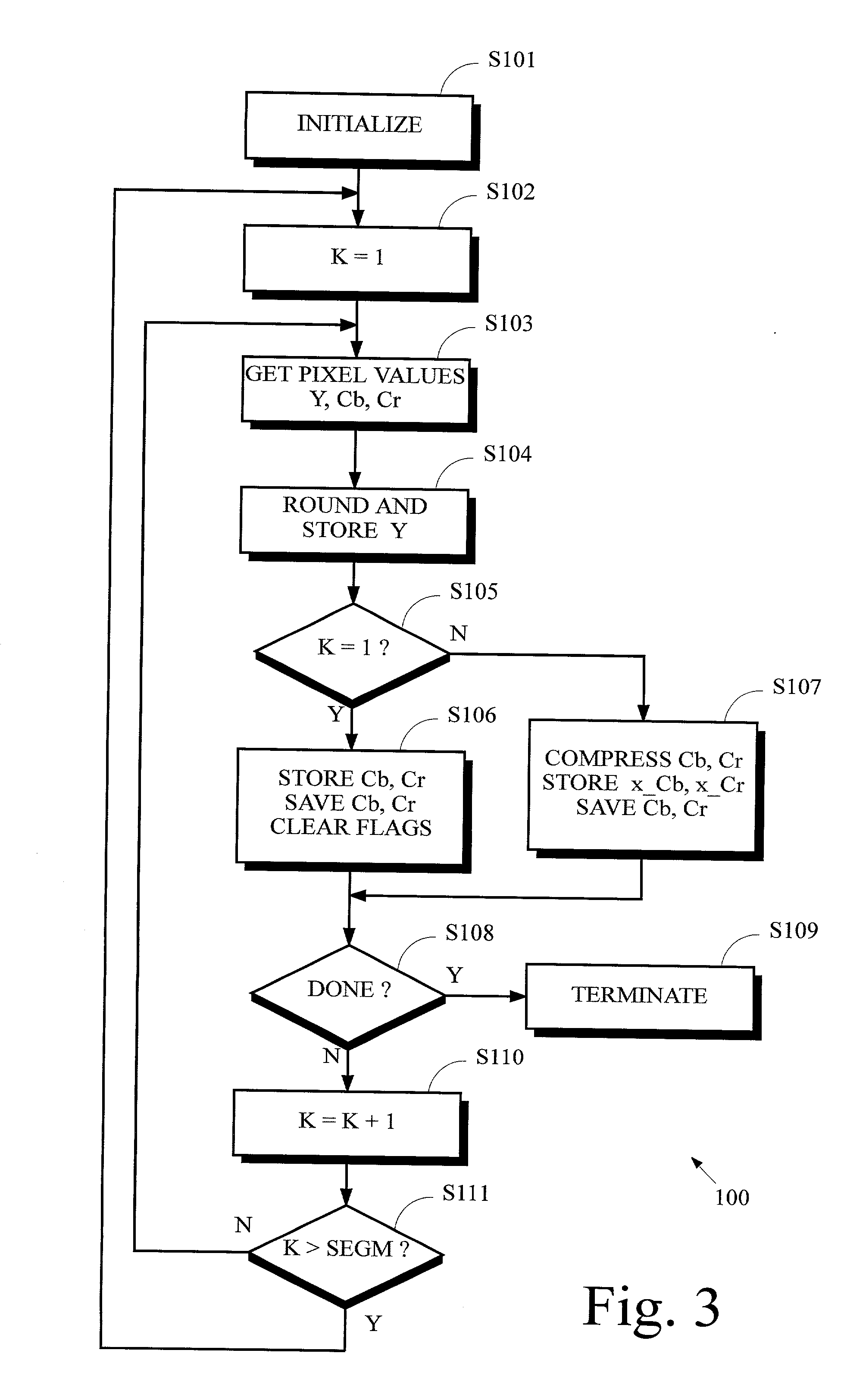Frame compression using differential codes and an escape code
a differential code and escape code technology, applied in the field of frame compression using differential codes and escape codes, can solve the problems of reducing the amount of memory required by the process that decodes the encoded information, reducing the amount of memory required by the process, so as to reduce the amount of memory required
- Summary
- Abstract
- Description
- Claims
- Application Information
AI Technical Summary
Benefits of technology
Problems solved by technology
Method used
Image
Examples
Embodiment Construction
Overview
[0014] FIG. 1 is a schematic block diagram of a device 10 such as a mobile telephone or a personal digital assistant (PDA) that receives and processes a digital video data stream and incorporates various aspects of the present invention. The digital video data stream is received from a path 11, which may be a wired or wireless communication paths with another device that provides the data stream. The processor 13 processes the data stream arranged in frames of information, stores the frames of information into random access memory (RAM) 15, and subsequently retrieves the stored information from the RAM 15, processes the frames of information to prepare them for use in an application, and passes the processed information to the application. In the example shown, the application is the display component 17, which may be implemented by a liquid crystal display (LCD) or thin-film transistor (TFT) panel, for example. Other examples of applications include video recorders, video e...
PUM
 Login to View More
Login to View More Abstract
Description
Claims
Application Information
 Login to View More
Login to View More - R&D
- Intellectual Property
- Life Sciences
- Materials
- Tech Scout
- Unparalleled Data Quality
- Higher Quality Content
- 60% Fewer Hallucinations
Browse by: Latest US Patents, China's latest patents, Technical Efficacy Thesaurus, Application Domain, Technology Topic, Popular Technical Reports.
© 2025 PatSnap. All rights reserved.Legal|Privacy policy|Modern Slavery Act Transparency Statement|Sitemap|About US| Contact US: help@patsnap.com



